
ACCESS has rolled out a powerful new feature for Resource Providers (RPs) called the ACCESS Variable Marketplace. Now RPs can easily set and modify the exchange rate for their resources, with flexibility to increase interest in an underutilized resource or to respond to high demand.

Do you know faculty members or Principal Investigators interested in getting involved with ACCESS? Are you interested in contributing your knowledge to help guide the program? Now is your chance to nominate yourself or another experienced individual for the ACCESS Researcher Advisory Board (RAC).

Embedding On-Ramps into a website is as easy as copying and pasting a few lines of Javascript, with most organizations able to implement it independently. One partner noted about the process, “It was so easy!” while another partner called it “seamless.”

The number of institutions leveraging On-Ramps is rapidly growing, with the product currently deployed at the Rocky Mountain Advanced Computing Consortium (RMACC), Illinois Computes at the University of Illinois Urbana-Champaign, Baylor University, and Jackson State University.

Institutions can now easily connect their faculty and students to information about ACCESS and its resources through the new ACCESS On-Ramps product.
An ACCESS On-Ramp is an inline JavaScript component that organizations embed directly into their websites, providing their member community with streamlined access to available ACCESS resources. The intuitive On-Ramps interface lets viewers browse and filter the set of resources and enables new audiences to smoothly and easily discover the powerful cyberinfrastructure available to them.
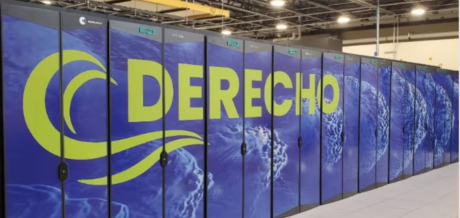
ACCESS now includes the Derecho system as an option for Explore ACCESS and Discover ACCESS projects. Derecho is the flagship supercomputing system at the National Science Foundation (NSF) National Center for Atmospheric Research (NCAR). Installed in 2023, the system is used annually by more than 1,500 researchers in the Earth system science community.
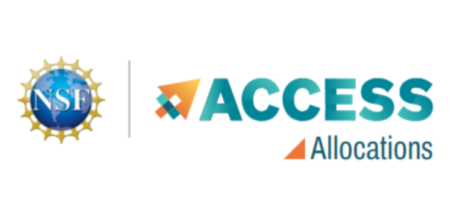
The window for submitting Maximize ACCESS proposals will close on Friday, Jan. 31. and awards will start April 1. From the Maximize ACCESS opportunity that closed last September, the Allocations team awarded nearly 1.6 billion CPU hours and more than 4 million GPU hours to 90 projects. The average project received 90% of the resources requested, and the current portfolio of ACCESS-allocated resources has room to award even more time to meritorious proposals. Information on preparing a successful Maximize ACCESS proposal can be found on the Allocations website.
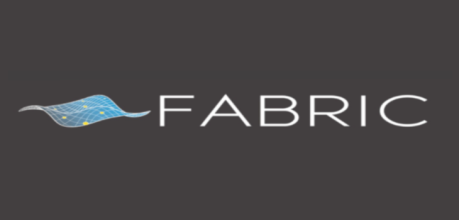
FABRIC, a unique resource in the NSF cyberinfrastructure ecosystem, is now part of ACCESS Resource. FABRIC is an internationally distributed set of equipment at commercial colocation spaces, labs and campuses. Its mission is to “explore impactful new ideas that are impossible or impractical with the current internet,” and its infrastructure enables cutting-edge experimentation and research at scale. Each node offers significant compute and storage, and all are interconnected by high-speed, dedicated optical links.
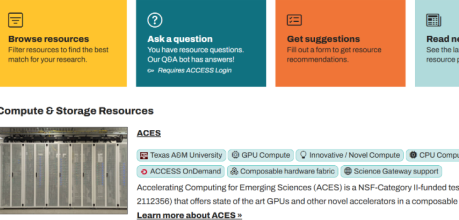
ACCESS Allocations introduces its new and improved Resource page, formerly called the Resource Catalog. The page is a one-stop shop for anyone seeking information on the resources available through ACCESS.
The page’s top navigation organizes information into four boxes at the top of the page:

Institutions can now connect their faculty and students directly to information about ACCESS and its resources through the new ACCESS On-Ramps product. An ACCESS On-Ramp is an inline JavaScript component that organizations can embed into their websites to allow their community to browse through ACCESS resources. The interface and filters are similar to the ACCESS Resource page to make it even easier for new audiences to discover and use powerful ACCESS resources. |
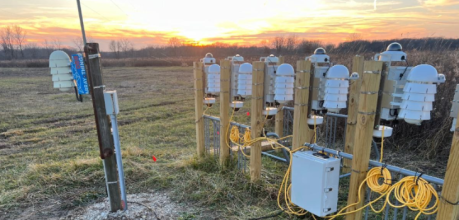
The Sage Edge Computing Platform is no ordinary CPU, GPU or storage resource, but a unique platform, a “new kind of national-scale cyberinfrastructure to enable AI at the edge for science.” The ACCESS community can learn more about Sage in the ACCESS Resource Catalog under “Northwestern U Sage Edge Computing Platform.” Sage is a distributed, intelligent sensor network that enables researchers to explore AI techniques to better understand natural and built environments. Throughout vast areas that span the U.S.
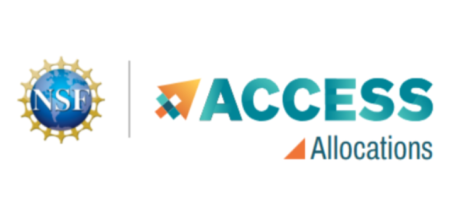
The next window for submitting Maximize ACCESS proposals will open on Thursday, Dec. 12 and close on Friday, Jan. 31, 2025. Awards will start April 1, 2025. From the Maximize ACCESS opportunity that closed in September, the Allocations Team awarded nearly 1.6 billion CPU hours and more than 4 million GPU hours to 90 projects. The average project received 90% of the resources requested, and the current portfolio of ACCESS-allocated resources has room to award even more time to meritorious proposals. |

During the previous round of submissions, ACCESS received 91 Maximize ACCESS proposals submitted by 58 Principal Investigators from across the U.S. The most heavily-represented fields of science were: biophysics, materials engineering, condensed matter physics, particle and high-energy physics, and astronomy and planetary sciences. |
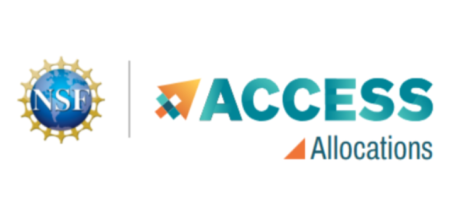
The next window to submit Maximize ACCESS applications opens on Dec. 15 and closes on Jan. 31, 2025. The next review meeting will be held in March 2025. For instructions on how to apply, please review the Prepare Requests webpage, which includes two training videos. The Allocations team will also hold two live training webinars on Thursday, Dec. 12 at 2 p.m. Eastern Time, and Tuesday, Jan. 25 at 2 p.m. ET. When you're ready to submit your request, please do so at the link below. |

Attention students and educators: With the fall semester underway, keep in mind that ACCESS resources are available for students, instructors and classroom projects. |

This year, ACCESS is a proud sponsor of the Tapia Conference, the premier venue to acknowledge, promote and celebrate inclusion in computing. If you plan to attend the conference in San Diego, Sept. 18 – 20, come see ACCESS at the Town and Country Resort, booth #622. The Tapia Conference, named for the internationally known computational scientist and mathematician Richard A. Tapia, brings together professionals from all backgrounds, ethnicities, ability levels and gender identities to connect, converse and collaborate. |

As you kick off the fall semester, don’t forget about ACCESS resources—they’re perfect for your classroom projects. ACCESS Explore is ideal for smaller classes or training sessions. Plus, grad students can be the lead on these projects! If you need something bigger, check out ACCESS Discover. These allocations are great for larger groups and offer more resources. You can apply for both types anytime, and you can submit multiple requests.

Are you remembering how to cite ACCESS in your research papers?
To ensure continued support for the NSF-funded cyberinfrastructure ecosystem, researchers are required to properly acknowledge the contribution of the ecosystem in their papers, presentations and other published works.
Papers, presentations and other publications featuring work enabled by ACCESS should properly acknowledge the program’s contributions by citing this publication:
Filter Announcements
Posting Announcements
Do you have an announcement to share with the ACCESS community?